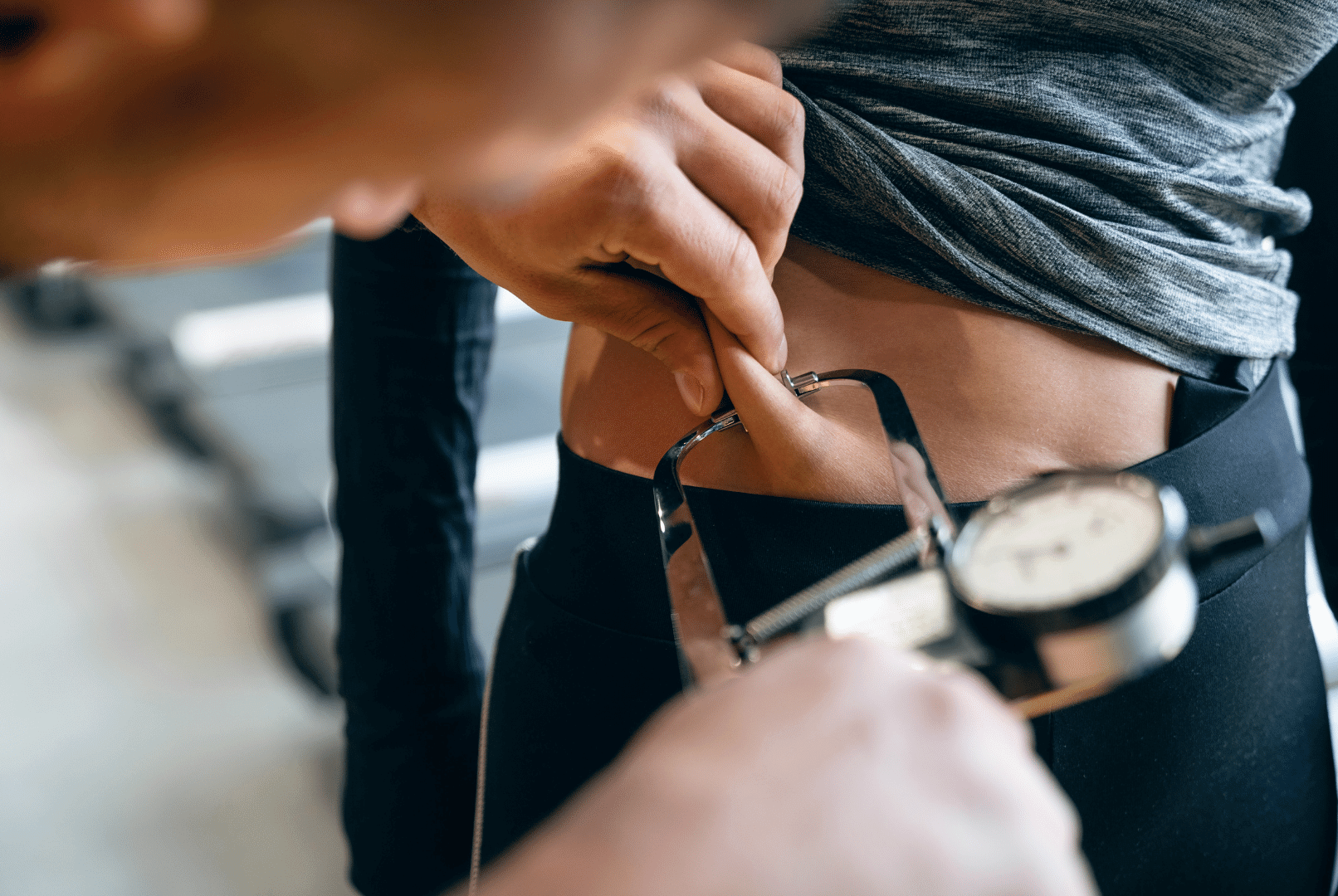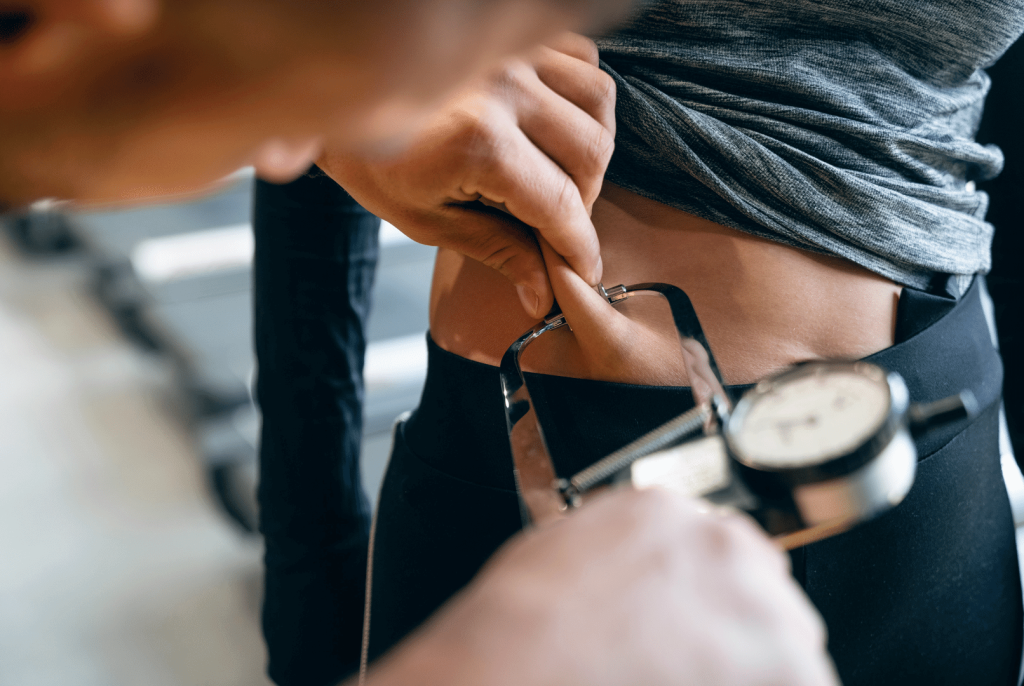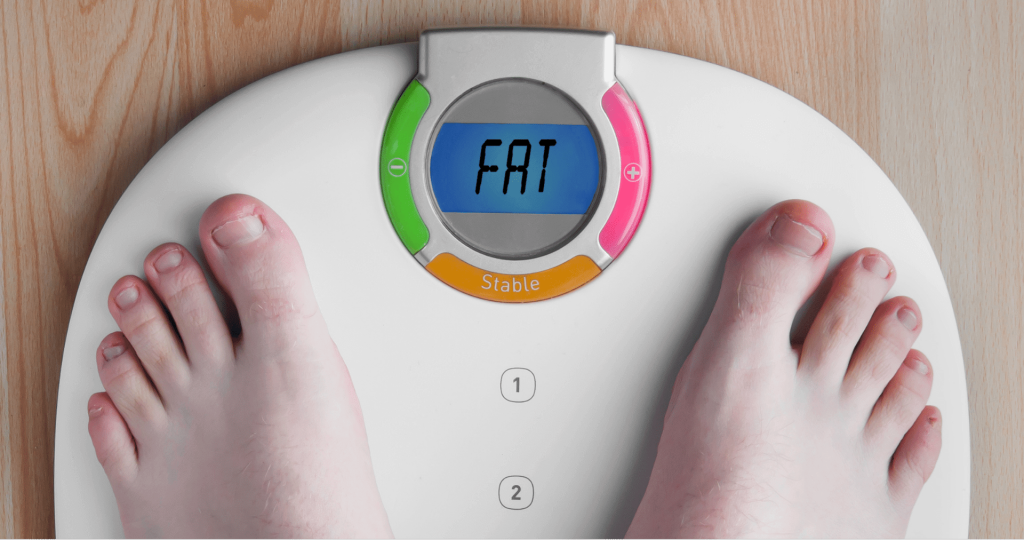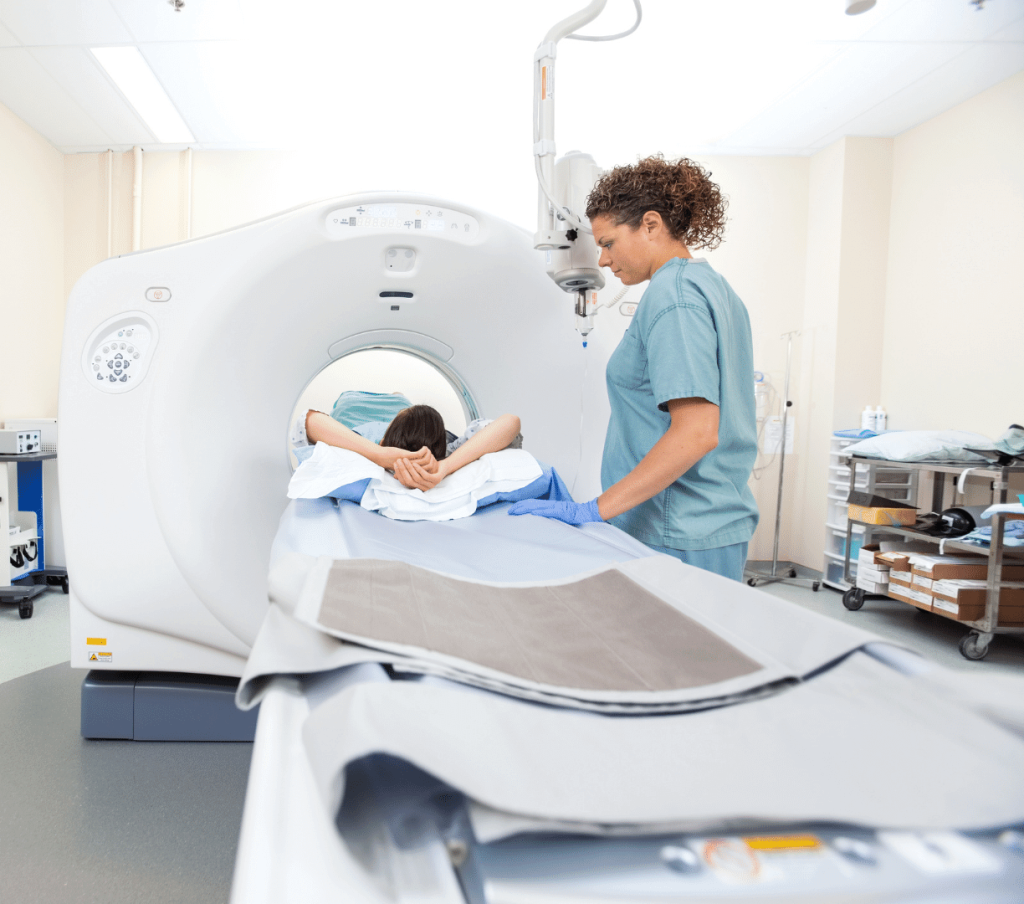
Body Recomposition: What Is It And How To Achieve It


Body Recomposition: What Is It And How To Achieve It
Every year, nearly 1 in 2 adults in the US try to lose weight only to eventually regain it back. In many cases, you will become healthier and look better by building muscle even when you’re not trying to look like a bodybuilder.
If the following apply to you, you’ll achieve better long-term results with body recomposition than weight loss or bulk-cut cycles:
- You’re at a healthy weight or even slightly overweight with some extra fat
- You are not at extreme ends of leanness or fatness
- You’re struggling with the last 5 – 10 lbs, which could be on the annoying spots that refuse to come off
If you’re a man who wants to get jacked, old-school bodybuilding advice may suggest that you can only achieve great results with dedicated cutting and bulking. However, bulking and cutting is not for everyone, especially beginners who are not very lean or very fat. Instead, body recomposition may be a better and healthier option.
Body recomposition is about achieving a lean and toned look by losing body fat and gaining lean muscle. But is that even possible? And can you do it simultaneously?
This article will help you understand the process of body recomposition so that you can take the necessary steps to ensure your hard work will lead to you achieving your goals.

What Is Body Recomposition?
The phrase ‘body recomposition’ is used everywhere, but what does it actually mean?
First, it would be helpful to describe what body ‘composition’ is. Body composition is the percentages of fat, muscles, and bone mass in your body. In the fitness and nutrition context, we’re generally concerned with how much body fat relative to body muscle you have on your frame.
So, the term “body recomposition” means to change the ratio of body fat and muscle, at the same time, typically by increasing muscle mass and decreasing body fat. In turn, it will lead you to that ‘toned’ or ‘lean’ look that so many want to achieve.
For body recomposition, you would emphasize keeping track of your body fat percentage and lean muscle mass rather than only looking at the scale and weight changes.
Who Is Body Recomposition Suitable For?
Body recomposition is good for:
- Those who wish to achieve a more toned or lean look, starting out at a healthy weight or normal BMI of between 18.5 – 24.9 kg/m2 and body fat between good and acceptable ranges
Table: Percentage of body fat and categorization
| Males | Females | Rating |
| 5-10 | 8-15 | Athletic |
| 11-14 | 16-23 | Good |
| 15-20 | 24-30 | Acceptable |
| 21-24 | 31-36 | Overweight |
| >24 | >37 | Obese |
- Those who want to lose fat mass to help with overall health
- New lifters, i.e., “newbies (this group has been found to have the most significant body recomposition changes)
- Those who want to lose the last 5 – 10 lbs and struggle with stubborn spots (Note: you can’t spot-reduce, but overall getting leaner will help)
Body recomposition is not good for:
- Bodybuilders
- Those who are highly lean, such as men who are under 10% body fat and women who are under 18% body fat
- Those who are overweight or obese
These groups should avoid a body recomposition and focus more on a build/cut phase in order to achieve optimal results. Build and cut phases will be discussed later in this article.
How To Do Body Recomposition
So how do you successfully lose fat mass and gain lean muscle simultaneously?
1. Weight Training, Intentionally And Progressively
Weight training is integral to body recomposition (along with proper nutrition intake). Therefore, incorporating some form of weight training is essential for achieving good results. Whether new or experienced, you must challenge yourself every time you workout.
If you do not like weight training, finding something you do like is key. Putting stress on the muscles in one form or another will be essential for gaining lean muscle. Other resistance activities besides traditional weight lifting that will help recomposition include:
- HIIT training
- Plyometrics
- Bodyweight exercises
- Sport training
To build muscle, rest days are essential. Giving your body and muscles time to recover and rebuild properly will allow you to progress continually in your training program.
2. Protein Intake
Proteins are the key building blocks of muscles. Also, eating enough protein stimulates muscle protein synthesis. Protein also keeps you satiated. Unfortunately, many people don’t get enough protein to build and maintain muscles.
When adding and maintaining protein in your daily diet, it is not just about the amount of protein that feels like enough to you, but what research shows is actually optimal for body recomposition. Ideally, you would intake 1.4-2.0g/kg (in your body weight) of protein.
The easiest way to calculate that you are within the range of protein recommended is 1 gram/day per pound (2.2g/day per kg) of body weight. As an example: a 150-pound (68.18 kg) person = 150 grams of protein per day.
Keys to add extra protein:
- Focus on increasing in small amounts. For example, if your goal is 130g of protein, but you are currently only eating 90g a day, adding 10-20g more a day and working up to 130g will be more practical than attempting to jump right up to 130g a day.
- Increase your protein portion sizes at each meal, even just a little. Five grams extra, here and there, will add up to a lot throughout the day.
- Incorporate a protein-heavy snack between meals. Snacks such as a shake, bar, or other types of protein sources (such as meat, dairy, peas, and beans).
- Use protein drinks, such as Protein Breakthrough

3. Calorie Mindfulness: Eating Enough Calories
Building muscle takes a lot of energy both during training and at rest. This is why body recomposition is often the easier way to get lean rather than just a straight-up caloric deficit. The caveat is that you need to eat enough to fuel your muscle growth for it to happen.
When aiming for a body recomposition, you will want to ensure you are not in a calorie deficit and not in a calorie surplus, but rather, staying at your maintenance calories.
A calorie deficit is when you are not eating enough to provide your body with the calories needed to output its daily energy. A calorie surplus is when you eat over the calories your body needs for its daily energy. In contrast, maintenance calories are a range of calorie intake where your body maintains its size (without going up or down).
Some people also do better with some calorie cycling to recomposition their bodies. For example, you can eat a few hundred more calories on training days, and a few hundred less on rest days. Or you may stick to a caloric deficit on weekdays to allow for more calories on weekends. However, your overall caloric intake in any given week should average out to your maintenance calories.
To find out what your maintenance calories are, you need to take into account your total daily energy expenditure (TDEE). TDEE is how much energy you use for your daily activities, including walking around, working out, and fidgeting, and the energy your body uses for your vital organs to function.
The Mifflin St Jeor calculation is one of the most valid TDEE calculations.
- Metric: Men: (10 × weight in kg) + (6.25 × height in cm) – (5 × age in years) + 5
- Imperial: Men: BMR = (4.536 × weight in pounds) + (15.88 × height in inches) − (5 × age) + 5
- Metric Women: (10 × weight in kg) + (6.25 × height in cm) – (5 × age in years) – 161
- Imperial Women: Women: BMR = (4.536 × weight in pounds) + (15.88 × height in inches) − (5 × age) − 161;
4. Consistency
Body recomposition is not a quick process. It takes time and consistency. Finding a time during the year to commit to your program and be consistent throughout the week will yield the best results.
5. Patience
The rate at which you may see results from body recomposition varies. If you are new at tracking calories or resistance training, you may see faster results. This is because your body will quickly respond to the stress you are putting on it from your new lift/calorie program. Then, the results will even slow down. The adaptations may take a little longer for those who are more advanced and already familiar with lifting and tracking nutrition intake.
Tracking Your Body Recomposition Progress
Note: If you’re recompositioning, you may not lose a lot of weight, but you will look more toned and refined over time.
Weigh yourself daily and look at your average week and how your weight is trending. Over a couple of weeks, is your weight going down, up, or staying the same?
If your weight is going down, that means you are in a calorie deficit, which is not beneficial for body recomposition because your muscles need calories to build. If your weight increases, you are in a surplus and possibly at risk of gaining fat mass. If your weight is stable, you are at a maintenance level.
But what if your weight is going up? How do you know you are not gaining lean muscle? One of the most ideal ways to measure body composition is through an actual body composition test on a valid and reliable machine. These can sometimes be found at gyms or labs and include:
- BIA (bioelectrical impedance analysis) is a very proven measurement tool
- DEXA machine, which is also a very proven measurement tool
- Calipers, which are not as accurate as the BIA or DEXA, but are still a reliable way to follow data
- At home scale with BIA functions, some are more accurate than others.
Whichever device you choose to monitor your body composition, use the same machine every time you weigh in to ensure accuracy.

Check out this article for best ways to track your progress.
Advantages And Disadvantages Of Recomposition vs. Other Approaches
Another common approach to achieving a body composition change is a build (bulk) phase and a cut phase. Unlike body recomposition, a cut and build phase occurs at separate times. They are proven methods and yield great results.
However, they take more time than simultaneously losing and gaining through body recomposition. But they work to achieve more extreme ends of muscle gain and fat loss than recomposition.
During a build phase, you will be in a calorie surplus, focusing on supporting your weightlifting efforts to gain lean muscle. In a ‘cut phase,’ you will aim to lose weight slowly, focusing only on losing fat mass. A cut phase is achieved by lowering calories, keeping protein high, and continuing with a progressive strength training program.
Some key points to a build and cut phase:
- Build phase
- Optimize muscle protein synthesis
- Limit muscle protein breakdown
- Calorie SURPLUS
- Cut phase
- Losing fat mass without gaining muscle
- Metabolic rate slows down
- In a calorie DEFICIT

What Is The Difference Between Males And Females?
There is no difference in the ability of the body to gain muscle mass/lose fat mass in males vs. females. Although females have a higher percentage of body fat and males tend to gain muscle faster because of the increased testosterone levels, females can still gain the same amount of muscle mass, albeit sometimes a bit slower.
Supplements To Use During Recomposition
Because high protein diets are so important for body recomposition, supplementation is often needed to reach your protein goal. Therefore, protein powder is a great supplement to include in your day.
It is possible to consume the majority of daily protein via whole foods such as chicken, fish, dairy, and other sources of meats or beans. However, supplementation will give a bit more opportunity for a quick source of a high quantity of protein in one serving and is especially good as a snack.
The easiest way to aim for protein is 1g per pound, or 2.2g/kg, of body weight. For example, a 150-pound person (68.18 kg) would equal 150g of protein per day.
Other Tips When Headed Into A Body Recomposition Phase
Be realistic. Stop acting like you are in a fat loss phase and do not look at the scale to look for weight loss, because that is not the focus of body recomposition. If done right, you will not necessarily drop weight on the scale. Your weight may even go up slightly, but your clothes will fit better.
Take pictures and measurements of progress. Since the scale won’t show much difference in numbers, your pictures, measurements, and even clothes will often change immensely.
Track other goals aside from body goals. For example, tracking your lifts in the gym. Are you getting stronger?
This could be different than anything else you’ve tried and the amount of data to keep track of can be overwhelming. So it’s best to work with a qualified coach who has helped many people achieve successful recomposition.
Have fun. Mindset is everything. Sometimes it’s easy to get caught up on the scale number or the length of the process, but as you have heard, “it’s about the journey, not the destination.”
References
- Products – data briefs – number 313 – July 2018. Cdc.gov. Published June 7, 2019. Accessed November 16, 2022. https://www.cdc.gov/nchs/products/databriefs/db313.htm
- Normal ranges of body weight and body fat. Human Kinetics. Accessed November 16, 2022. https://us.humankinetics.com/blogs/excerpt/normal-ranges-of-body-weight-and-body-fat
- Barakat C, Pearson J, Escalante G, Campbell B, De Souza EO. Body recomposition: Can trained individuals build muscle and lose fat at the same time?: Can trained individuals build muscle and lose fat at the same time? Strength Cond J. 2020;42(5):7-21. doi:10.1519/ssc.0000000000000584
- Jäger R, Kerksick CM, Campbell BI, et al. International Society of Sports Nutrition Position Stand: protein and exercise. J Int Soc Sports Nutr. 2017;14(1). doi:10.1186/s12970-017-0177-8
- Mifflin MD, St Jeor ST, Hill LA, Scott BJ, Daugherty SA, Koh YO. A new predictive equation for resting energy expenditure in healthy individuals. Am J Clin Nutr. 1990;51(2):241-247. doi:10.1093/ajcn/51.2.241
- Bredella MA. Sex differences in body composition. Adv Exp Med Biol. 2017;1043:9-27. doi:10.1007/978-3-319-70178-3_2
